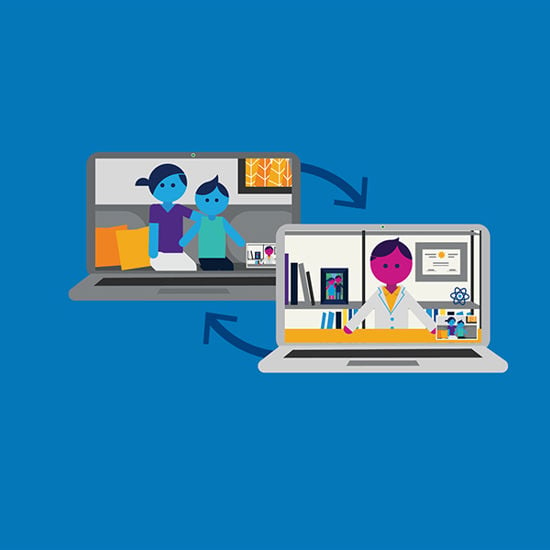- Doctors & Departments
-
Conditions & Advice
- Overview
- Conditions and Symptoms
- Symptom Checker
- Parent Resources
- The Connection Journey
- Calm A Crying Baby
- Sports Articles
- Dosage Tables
- Baby Guide
-
Your Visit
- Overview
- Prepare for Your Visit
- Your Overnight Stay
- Send a Cheer Card
- Family and Patient Resources
- Patient Cost Estimate
- Insurance and Financial Resources
- Online Bill Pay
- Medical Records
- Policies and Procedures
- We Ask Because We Care
Click to find the locations nearest youFind locations by region
See all locations -
Community
- Overview
- Addressing the Youth Mental Health Crisis
- Calendar of Events
- Child Health Advocacy
- Community Health
- Community Partners
- Corporate Relations
- Global Health
- Patient Advocacy
- Patient Stories
- Pediatric Affiliations
- Support Children’s Colorado
- Specialty Outreach Clinics
Your Support Matters
Upcoming Events
Public Meeting: 2024 Community Benefit and Hospital Transformation Program
Tuesday, May 14, 2024Join Children's Hospital Colorado at one of our virtual events to learn...
-
Research & Innovation
- Overview
- Pediatric Clinical Trials
- Q: Pediatric Health Advances
- Discoveries and Milestones
- Training and Internships
- Academic Affiliation
- Investigator Resources
- Funding Opportunities
- Center For Innovation
- Support Our Research
- Research Areas

It starts with a Q:
For the latest cutting-edge research, innovative collaborations and remarkable discoveries in child health, read stories from across all our areas of study in Q: Advances and Answers in Pediatric Health.


Eating Disorders
Eating Disorders (Anorexia and Bulimia Nervosa)
Parents and caregivers know their kids best. That’s why we put families at the center of every care team.

What is an eating disorder?
An eating disorder arises when a person develops a distorted relationship with food and weight, but it involves much more than simple dieting, exercise or feeling too full. Eating disorders take several forms, including anorexia nervosa, bulimia nervosa, avoidant restrictive food intake disorder or an atypical eating disorder (also known as "other specified feeding or eating disorder," or OSFED).
- Anorexia nervosa: "Anorexia nervosa" literally means loss of appetite due to nervousness, but the name is misleading. Except in advanced phases of the illness, a person with anorexia nervosa is always hungry. A person with anorexia exercises enormous control to restrict their eating, even in the face of severe physical hunger.
- Bulimia nervosa: Bulimia nervosa is a disorder that involves eating large amounts of food and then getting rid of it by vomiting or using laxatives, diuretics or diet pills. Some people with bulimia also purge after a binge by fasting for days or by exercising for hours.
- Avoidant restrictive food intake disorder: Children can have different reasons (aside from anorexia and bulimia) for weight loss or failure to gain weight as expected. Some kids have an extreme fear of vomiting or choking, and may restrict their intake because of this. Other kids may have been chronic picky eaters with feeding problems since birth who are falling of their growth curves. Our Eating Disorders Program also treats school-age children and adolescents with these problems by using a combination of cognitive behavioral therapy, parent-supported nutrition and family-based treatment.
Who gets eating disorders?
Although anyone can suffer from an eating disorder, there are some trends in gender and age. Both anorexia and bulimia are about eight times more common in females than in males. Between 1 to 13% of American high school and college-age women are estimated to have anorexia nervosa, bulimia nervosa or OSFED. Young people often work hard to keep their struggles with food secret, so it's hard to know just how many people suffer from eating disorders.
Anorexia
Anorexia nervosa can develop at any age, but it most often begins during the teenage years. The risk of developing an eating disorder often starts when a teenager decides to "get healthier" or "more fit" and follows a diet, but then goes beyond initial weight loss goals and severely limits intake. Often, the teenager is at a normal weight when they begin to diet. Anorexia nervosa begins to set in when the teen reaches the chosen goal, but still feels they are not thin enough. Even though the teen may now be extremely thin, he or she feels fat. So the teen resolves to restrict intake further and may also increase exercise in an effort to increase the rate of weight loss.
Anorexia nervosa affects girls more often than boys, but there has been an increase in the number of males suffering from anorexia nervosa. Males face similar societal pressures to be strong and "buff," and they also have trouble with self-esteem issues that contribute to the development of eating disorders.
Family members may not realize what's happening until the person with anorexia nervosa becomes dangerously underweight. By this time, they have severely limited what they will eat and have restricted their fat intake. Exercise may continue relentlessly for hours each day as they adhere to a rigorous schedule that burns up even more unwanted calories. No matter what friends and family might say, a person with anorexia usually denies there is a problem and refuses to give up his or her extreme diet. Without professional intervention, the person will continue to get thinner until their health and life are in serious danger.
The typical person with anorexia nervosa is a perfectionist and an overachiever, excelling in school and involved with lots of activities. Sometimes, the preoccupation with weight starts in response to a stressful event, such as a loss of friends or problems in the family. It may begin as a way to deal with general pressures such as growing up, fitting in socially, doing well in school or keeping everyone happy in the family.
Bulimia
Like anorexia, bulimia often begins with a diet. But the dieter soon feels deprived and panicky and experiences intense hunger urges, and the cycle of restricting and binge eating sets in. The binge is followed by feelings of guilt about their loss of control and fear of getting fat. Bingeing is usually followed by desperate attempts to get rid of the food just eaten, but purging leaves the teen with bulimia still hungry. The vicious binge/purge cycle begins again.
This becomes a routine that is difficult to interrupt. People with bulimia nervosa, afraid that others will think their habit disgusting, become secretive and fearful of discovery. They may spend more and more time alone, sometimes going through the binge/purge cycle several times a day.
People with bulimia aren't always physically hungry; they have learned to use food to cope with stress and emotional difficulties. Erratic eating patterns develop in response to using food as a coping tool, which leads to the inability to respond to hunger and satiety in an appropriate manner. People with bulimia usually maintain close to normal weights. They often go through their binges and purges in private, so the condition may be hard to detect.
The typical person with bulimia nervosa is especially concerned with how others see them; they may be emotionally insecure and lack confidence. The individual feels that they live behind a façade: competent and attractive on the outside, but inept and disgusting underneath. Dieting initially begins as a way to feel better about oneself and to win approval from others. Bulimia tends to begin in the teen years and often continues into adulthood.
Avoidant restrictive food intake disorder (ARFID)
Avoidant restrictive food intake disorder (ARFID) is an eating disorder in which an individual limits the amount or type of food they consume, resulting in significant weight loss, lower than expected weight gain or faltering growth. Teens or children with ARFID may be underweight, experience significant nutritional deficiency or depend on liquid nutrition supplements or tube (NG or G-tube) feeding.
ARFID is different from anorexia, as people experiencing ARFID don't have a drive for thinness or fear of weight gain and don't feel disturbed by their body weight or shape.
The malnutrition created by ARFID can contribute to medical instability, loss of growth potential, osteoporosis and infertility.
Symptoms and factors that can contribute to developing ARFID include:
- Avoidance of food due to narrow preferences based on taste, texture, smell or appearance
- Concern about the consequences of eating (stomach pain, fullness, vomiting or choking phobias)
- Lack of interest in food or persistent low appetite that isn't caused by depression or anorexia
Children and adolescents with ARFID are often described as “picky eaters” and may have tantrums or show other behaviors to avoid food. They are often “below the growth curve,” due to inadequate nutrition for their weight and height, sometimes for many years.
The Family Based Therapy approach is helpful for children and adolescents with ARFID. Through this therapy, caregivers learn how to provide adequate nutrition for growth and development while helping kids learn how to complete meals and expand their diet. Parents and caregivers also learn strategies for managing food avoidance, anxiety and emotional distress. Children and adolescents often benefit from exposure therapy and general psychotherapy to help with distress and any co-existing mental health problems.
What causes eating disorders?
Despite more than 50 years of research, the cause of eating disorders remains largely unknown. We do know that living in a culture that values thinness and promotes dieting increases the risk of kids developing an eating disorder like anorexia or bulimia. In fact, research shows that by the age of 7, many children have already decided that it isn't okay to be fat.
Genetic factors, family history and certain personality traits, such as perfectionism, harm avoidance and anxiety also contribute to the likelihood of developing an eating disorder. The pressure to be slender is especially intense for girls and young women in their teens. Two-thirds of girls between the ages of 10 and 15 have tried dieting. Cultural messages about thinness are directed almost entirely toward women, and puberty is a time when young people are confronted with a rapidly changing body.
An understanding of issues that may have contributed to the onset of dieting and exercise leading to the eating disorder is important, but normalizing eating behavior and weight remains the most important intervention. It is often difficult for the person with an eating disorder to admit that they need help. That's why it may be up to friends, family members, coaches or teachers to guide the young person to the help they need.
What are the signs of eating disorders?
Eating disorders often begin with dissatisfaction in appearance and efforts to "eat healthier" or exercise more. Sometimes they begin when someone significantly increases their activity without increasing their intake, such as running cross country without an increase in nutrition. For some people, these behaviors can lead to changes in thought patterns and behaviors that develop into an eating disorder. The thoughts and behaviors become difficult to resist, and emotional and physical health begin to deteriorate.
Sometimes the problem begins with a weight-loss diet, but then something goes wrong. Once 5 pounds have been lost, the weight goal is lowered another 5 or 10 pounds. Or perhaps the original goal is never quite reached, and instead the individual’s weight goes up and down in a seesaw pattern. Sometimes no actual diet is involved; the person simply believes that they are too fat and experiences a relentless drive to be thinner. Eventually, the pursuit of thinness becomes an obsession that assumes more importance than anything else in the person's life.
Anorexia nervosa
The symptoms of anorexia nervosa include significant weight loss as part of a drive to be thin, fear of weight gain, loss of menstruation in females and body image distortion (not perceiving appearance accurately, such as the belief that one is fat, despite being very thin).
Bulimia nervosa
People with bulimia nervosa have episodes of binge eating at least several times a week, followed by purging through self-induced vomiting, exercise, laxatives or fasting. This often leads to large or small weight fluctuations.
ARFID
Symptoms of ARFID include:
- Avoiding food because kids have a small amount of tastes, textures, smells and appearances they like
- Concern about experiencing stomach pain, fullness, vomiting or choking while eating
- Having little interest in food or low appetite that isn't caused by depression or anorexia
How can I recognize an eating disorder in a child or teen?
Young people often go to great lengths to deny and conceal their painful struggles with food and weight. Here are some signs that may help you recognize an eating disorder in someone you know:
- Excessive weight loss: Anorexia is diagnosed when someone is 15% below expected weight (whether because of loss of weight or failure to gain with growth).
- Weight fluctuations: Although people with bulimia usually maintain near-normal body weight, their roller coaster dieting may show up in erratic weight gains and losses.
- Unusual eating habits, such as taking tiny bites to stretch out eating time or compulsively arranging food on the plate
- The person stops eating meals with the family; they might make excuses that they are too busy or eating elsewhere.
- Secretive behavior, especially with respect to eating and bathroom use. A teenager who habitually runs water, plays the radio or flushes the toilet repeatedly while using the bathroom may be masking the sounds of vomiting.
- Use of laxatives or diet pills.
- Food disappearing on a regular basis.
- Excessive and often obsessive exercise.
- Dull hair and hair loss, splitting or softening nails.
- An absence of menstrual periods related to loss of body fat.
- Dental cavities and gum disease, caused by malnutrition and vomiting.
- Extreme sensitivity to cold, caused by loss of fat and muscle.
- Fine body hair on arms and legs: This is the body's attempt to keep warm
- Low self-esteem.
- Distorted body image: No matter how thin they get, people with eating disorders still believe they are too fat.
- Irritability, depression or talk of suicide.
- Drug or alcohol abuse: Sometimes teenagers with eating disorders will turn to substance abuse to relieve feelings of fear, shame and depression.
What happens if an eating disorder isn't treated?
Without intervention, the consequences of an eating disorder can be tragic. Prolonged dieting, bingeing and purging and weight loss can all cause severe malnutrition. Almost every organ system is affected by malnutrition, including the brain, heart, liver, kidneys, bone marrow, skin and reproduction. For example:
- The heart rate slows, increasing the risk for potentially fatal heart attacks.
- Brain tissue is lost, some of it permanently.
- Girls stop having periods, and the lack of estrogen can lead to osteoporosis (weak bones), which happens in 50% of patients with anorexia.
- The act of purging causes electrolytes, especially potassium, to get dangerously low, leading to potentially fatal irregular heart rhythms.
- Vomiting can irritate and even tear the esophagus.
The emotional complications of an eating disorder can be just as devastating as the physical problems. Relationships with family and friends often suffer as the person begins to avoid eating with others or resists efforts by others to help them. The child or teen often feels isolated and depressed. This can get to a point where the person considers suicide, which is the leading cause of death in people who suffer from eating disorders.
Our treatment philosophy
Our treatment philosophy is designed to address the many factors that contribute to the development and maintenance of an eating disorder. Our treatment plan is based on parent-supported nutrition and recovery, which integrates core components of family-based therapy (also known as the Maudsley Method), which is the most extensively researched intervention for eating disorders in children and adolescents.
The family's role in getting better
Our primary goal is to provide kids and families with the skills they need to recover from a disorder like anorexia nervosa or bulimia nervosa. Our unique approach to treatment gives families the support and education they need to manage an eating disorder and work toward recovery, while minimizing time out of school and away from home.
Parent-supported nutrition puts parents in charge of all aspects of daily nutrition, whether kids are in or out of the hospital. The patient focuses on developing skills to identify and cope with the symptoms of an eating disorder, while working with their family to be able to continue to make progress at home. Parent-supported nutrition involves parents planning meals and the family eating together; multi-family groups, meals and parent support groups; and family rounds where the patient and family meet weekly with the treatment team to review progress and plan for the days ahead together.
Why choose the Eating Disorders Program at Children's Colorado?
We have over 25 years of experience in helping kids with eating disorders. Our staff is specialized in pediatric medical and psychiatric care and emphasizes the role of the family in treatment and recovery. We serve kids and families from across the United States with our unique approach to parent-supported nutrition and recovery.
Our family-centered approach to care has improved outcomes, decreased the length of hospital stay and the need for re-admission, improved family satisfaction and resulted in children's quicker return to home and school.
Although family-based therapy (FBT) was designed for kids and adolescents, we’ve found that modifications of this approach can be quite effective with young adults (ages 18 to 21) as well. We can adapt FBT by including the young adult in decision making about their care, working with their parents on meal planning and practicing skills for more independent living.
What help is available?
The important thing to remember is that the person with an eating disorder needs professional help. The person is caught in a cycle of destructive behavior that they cannot break alone, even with all the willpower in the world.
If you think someone in your family may be struggling with an eating disorder, speak with your child's physician or call an eating disorders program that specializes in the treatment of children, young adults and teenagers. Children, teens and young adults have different problems and pressures than adults, and treatment approaches should address these special concerns.
For more information about the Children's Colorado Eating Disorders Treatment Program, please call 720-777-6200.
What can I do?
As a parent:
- Be a good role model. Set a family standard of eating meals together regularly and encouraging balanced eating and activity.
- Avoid negative comments about appearances and be aware of comments you make about yourself and family members. Stay positive and emphasize the whole person, not just how someone looks. Don't criticize or tease your child about minor weight gains, and avoid power struggles over food.
- Help your child build healthy self esteem. Give them opportunities to explore different interests and build confidence.
- Remember that no one is to blame when a child develops an eating disorder. Discuss your concerns openly, then seek professional help. A pediatrician or primary care provider is where most families start when they become concerned.
As a friend:
- Don't comment on your friend's eating behavior or size. If your friend has had anorexia nervosa and gains weight, don't praise him or her for it. What your friend will hear is, "You're fat again."
- Remember that you can't solve the problem. You aren't responsible for saving your friend – you can be supportive and concerned, but encourage your friend to talk to a parent, teacher or counselor. If they don't, tell an adult close to your friend about your concerns.
As a school nurse, counselor, teacher or coach:
- Discuss your concerns with the child or adolescent first, and suggest that he or she talks with the parents.
- Expect denial of any problem. You may have to talk with the parents, but always let the adolescent know that you will be doing this and why.
Next steps
-
Would you like to learn more about us?
Learn more about the Eating Disorder Treatment Program -
Do you have questions about your child’s condition?
720-777-6200

Compassionate care, wherever you are
We’re here when you need us. Telehealth appointments are available across every specialty, so you can get the high-quality care we’ve always offered from the comfort, privacy and convenience of home.
See if telehealth is right for you
Get to know our pediatric experts.

Yasas Tanguturi, MBBS
Child and Adolescent Psychiatry, Psychiatry
Patient ratings and reviews are not available Why?

Alyson Hatten, LPC
Patient ratings and reviews are not available Why?

Benjamin Mullin, PhD
Patient ratings and reviews are not available Why?

Lina Patel, PsyD
Patient ratings and reviews are not available Why?



 720-777-0123
720-777-0123



